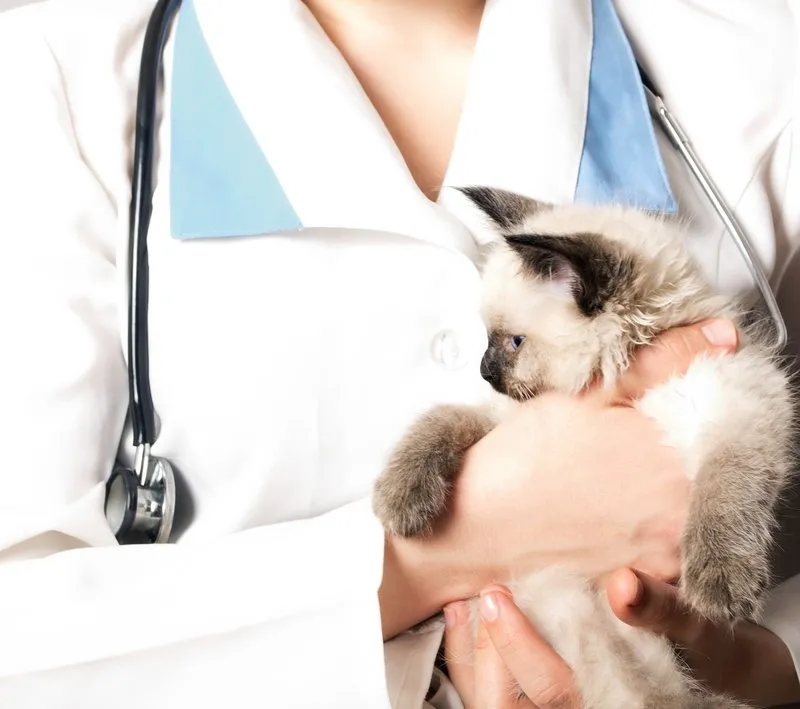Did you know that our feline pals can develop many different dental issues? These problems are just as painful for kitties as they are for us. A Roanoke, VA discusses caring for Fluffy’s teeth in this article.
Common Problems
Cats can develop many different dental issues. Some of the most common ones include gum disease, abscesses, misalignments, and broken teeth, and stomatitis, which is an extremely painful oral infection. Tooth resorption is also quite common for kitties.
Red Flags
It’s important to know the warning signs to watch for. Bad breath is a common one. Other signs of dental trouble include drooling, swelling, bleeding, and visible tartar buildup. Your furry buddy may also dribble food out of her mouth, take longer eating, chew on one side of her mouth, or start preferring softer food. You may also notice some of the behavioral changes we often see in kitties that don’t feel well, such as poor grooming, withdrawal, grumpiness, and lack of interest in play. Contact your vet right away if you notice any of these issues.
Home Care
Just like with people, brushing is really the most effective way to clean Fluffy’s teeth. We know, this sounds a bit risky. However, you can teach your pet to let you brush her choppers without sending you to the ER for stitches. The key is to take training very slowly, and to incorporate lots of positive reinforcement, such as cuddles and treats. You want your cat to feel like she’s being pampered, not punished. Start by just gently rubbing your furry pal’s gums as you pet her. This is just to get her used to her mouth being handled. Then, you can add kitty toothpaste. You may want to get a thumb toothbrush or wrap your finger in gauze. Just don’t force your feline buddy to submit for long. That’s a good way to get scratched!
Other Options
If you aren’t having any luck getting your cat to let you brush her teeth, don’t worry. Your vet may recommend other options, such as dental flakes or dental formula kibble. It’s also important to make sure that Fluffy always has plenty of fresh, clean water. This will not only keep her hydrated, it will clean her mouth and rinse away food particles.
Our Advice on Kitty Dental Care
What are some common dental issues that cats face?
Cats commonly face dental issues, including gum disease (gingivitis), tooth resorption, abscesses, and broken teeth. Stomatitis, a painful oral infection, is also frequent. If not addressed, these conditions can lead to discomfort, difficulty eating, and systemic health problems. Regular dental check-ups and good oral hygiene are crucial to preventing these issues. Cat owners need to be vigilant about dental care and seek veterinary advice at the first sign of trouble.
What are the red flags indicating dental problems in cats?
Red flags for dental problems in cats include bad breath, drooling, bleeding or swollen gums, tartar buildup, and changes in eating habits like difficulty chewing or preference for softer food. Behavioral changes such as reduced grooming, withdrawal, and decreased playfulness can also indicate dental issues. If your cat exhibits any of these signs, it’s essential to consult a veterinarian promptly to address potential dental concerns and ensure your cat’s overall health and comfort.
What are some behavioral changes in cats that may signal dental discomfort?
Behavioral changes in cats signaling dental discomfort include reduced interest in food or preference for softer foods, dropping food while eating, chewing on one side of the mouth, and increased drooling. Cats may also show signs of pain, such as pawing at their mouth, decreased grooming, withdrawal from interaction, or increased irritability. These behaviors can indicate dental issues like tooth pain or gum disease, warranting a veterinary check-up for proper diagnosis and treatment.
What are some tips for introducing tooth brushing to a cat?
Introducing tooth brushing to a cat starts with patience and positive reinforcement. Begin by gently rubbing your cat’s gums with your finger to get them used to mouth handling. Gradually introduce a cat-specific toothpaste (never use human toothpaste) by letting them taste it. Next, use a finger brush or soft-bristled toothbrush. Brush gently, focusing on the outer surfaces of the teeth. Keep sessions short and reward your cat with treats or affection to associate brushing with positive experiences. It’s crucial to go at your cat’s pace and never force the process.
If brushing isn’t an option, what other dental care methods can cats use?
If brushing isn’t feasible for your cat, alternative dental care methods exist. Consider dental-formulated kibble or treats that help reduce plaque and tartar buildup. Dental gels or wipes specifically designed for cats can also be effective. Providing chew toys that promote dental health and regular professional cleanings by a veterinarian is essential. Always ensure fresh, clean water is available to aid in oral hygiene. It’s critical to consult with your vet for tailored advice to your cat’s needs.
Do you have questions about caring for your cat? Contact us, your Roanoke, VA pet hospital anytime!



